Description
The instruction for medical use
of Levolet Torgovoye medicine
Levolet
Mezhdunarodnoye’s name the unlicensed
name Levofloxacin Dosage Form
of the Tablet, coated 750 mg
Structure
One tablet contains
active agent – a levofloksatsina gemigidrat 768.70 mg are equivalent to a levofloksatsin of 750.0 mg
excipients: cellulose microcrystalline (Avicel PH 101), cellulose microcrystalline (Avicel PH 102), starch corn, silicon dioxide colloidal, krospovidon, gipromelloza of 15 cps.
structure of a cover: magnesium stearate, Opadray the white OY-58900, water
the Description
of the Tablet modified a capsulovidny form with a biconvex surface coated white color.
Pharmacotherapeutic group
Antimicrobic means – derivatives of a hinolon. Ftorkhinolona. Levofloxacin.
The ATX J01MA12 code
the Pharmacological
Pharmacokinetics At properties oral administration levofloxacin is soaked up quickly and almost completely, peak concentration in plasma is reached during 1-2 h. The absolute bioavailability is 99 – 100%.
Food does not render considerable effect on absorption of a levofloksatsin.
Steady concentration of drug is reached during 48 h after reception according to the scheme in a dosage of 500 mg 1 or 2 times a day.
Distribution
About 30 – 40% of a levofloksatsin contacts protein of blood plasma.
The average volume of distribution of a levofloksatsin is about 100 l after introduction of a single and repeated dose of 500 mg that indicates extensive distribution in body tissues.
Penetration into fabrics and liquids of a body
Was shown that levofloxacin gets into a mucous membrane of bronchial tubes, liquid of an epithelial vystilka, alveolar macrophages, tissue of lungs, skin (interstitial liquid), tissue of a prostate and urine. However levofloxacin badly gets into cerebrospinal fluid.
Biotransformation
Levofloxacin is almost completely metabolized, metabolites are dezmetil-levofloxacin and N-oxide of a levofloksatsin. These metabolites contain also lt, 5% of a dose of drug and are allocated with urine. Levofloxacin of a stereokhimicheska is stable and is not exposed to chiral inversion.
Removal
After reception of a levofloksatsin inside or in/in introductions drug is rather slowly brought out of plasma (t/2: 6 – 8 h). It is removed generally by kidneys (& gt, 85% of the entered dose).
The average seeming general clearance of a levofloksatsin after introduction of a single dose of 500 mg was 175 +/-29.2 ml/min.
There are no significant differences in pharmacokinetics of a levofloksatsin at an intravenous and oral route of administration that confirms their interchangeability.
The linearity
Pharmacokinetics of a levofloksatsin is linear in the range of doses from 50 to 1000 mg.
Special groups of patients
Patients with a renal failure
the pharmacokinetics of a levofloksatsin is influenced by a renal failure. At depression of function of kidneys the drug removal by kidneys and renal clearance decreases, elimination half-life, as shown in the table below increases.
Pharmacokinetics in a renal failure after oral administration of a single dose of 500 mg.
Clkp [ml/min.]
& lt,
20 20 – 49 50 – 80
Clpoch. [ml/min.]
of 13
26
57
t1/2 [ch] 35 27 9
Patients of advanced age
does not exist considerable differences in pharmacokinetics of a levofloksatsin at patients of young and advanced age, except connected with differences in clearance of creatinine.
Sexual distinctions
the Separate analysis of male and female patients showed presence of very insignificant sexual differences in pharmacokinetics of a levofloksatsin. There are no proofs that these sexual distinctions have the clinical importance.
The pharmacodynamics
Levofloxacin represents synthetic antibacterial drug of a class of ftorkhinolon, S (-) an enantiomer of racemic active agent of an ofloksatsin.
The action mechanism
Levofloksatsin affects complex DNK-DNK-giraza and topoisomerase IV as antibacterial drug, a derivative hinolon.
FK/FD ratio
Degree of bactericidal activity of a levofloksatsin depends on a ratio between the maximum concentration in serum (Cmax) or the area under pharmacokinetic curve (AUC) and the minimum overwhelming concentration (MOC).
The resistance mechanism
Resistance to a levofloksatsin is bought gradually by a website target mutation in type topoisomerases II, DNK-girazy and topoisomerases IV. Other mechanisms of resistance, such as permeability barriers (are widespread at Pseudomonas aeruginosa) and outflow of substances from fabric can also affect susceptibility to a levofloksatsin.
The cross resistance between levofloksatsiny and other ftorkhinolona is observed. Because of features of the mechanism of action, in general, there is no cross resistance between levofloksatsiny and other classes of antibacterial drugs.
Boundary values
the MPK boundary values Recommended by the European committee on testing of sensitivity for germicides (EUCAST) for a levofloksatsin, with carrying out differences between sensitive microorganisms and umerennochuvstvitelny and also between moderately sensitive and resistant microorganisms, are given below in the table for testing for MPK (mg/l).
The MPK clinical boundary values recommended by the European committee on testing of sensitivity for germicides for a levofloksatsin (version 2.0, 01.01.2012 of):
Pathogen
of Chuvstvitelnostt
Enterobakteriya’s Resistance
of ≤1 mg/l
& gt, 2 mg/l
of Pseudomonas spp.
≤1 mg/l
& gt, 2 mg/l
of Acinetobacter spp.
≤1 mg/l
& gt, 2 mg/l
of Staphylococcus spp.
≤1 mg/l
& gt, 2 mg/l
of S. pneumoniae of 1
≤2 mg/l
& gt, 2 mg/l
of Streptococcus A, B, C, G
≤1 mg/l
& gt, 2 mg/l
of H. influenzae
of 2 3 ≤1 mg/l
& gt, 1 mg/l
of M. catarrhalis of 3
≤1 mg/l
& gt, 1 mg/l
the Boundary values which are not connected with a type
of mikroorganizmov4 ≤1 mg/l
& gt of 2 mg/l
Boundary values for a levofloksatsin are related to therapy using high doses of drug.
Low level of resistance to ftorkhinolona can be observed (drug MPK ciprofloxacin of 0.12-0.5 mg/l), however there are no proofs that this resistance has the clinical importance in respiratory infections a stick of H. influenzae.
Strains at which MPK values above boundary values of sensitivity meet very seldom or about them it was not reported yet. Analyses on identification and sensitivity to germicides with use of any similar isolate should be repeated and if the result is confirmed, it is necessary to send isolate to help laboratory. Until confirmations of the clinical answer for isolates at which MPK exceeded the boundary values of resistance operating at the moment are received, such isolates have to be considered as resistant.
Boundary values are applicable for a dose of 500 mg x 1 silt of 500 mg x 2 for oral administration and 500 mg x 1 – 500 mg x 2 for in/in introductions.
Distribution of resistance varies depending on location and time (for separate types), it is desirable to obtain information on local resistance, especially at treatment of heavy infections. If necessary it is necessary to address for council of the expert if the local resistance is so widespread that the advantage of drug use is called into question, at least, in some types of infections.
Usually susceptible species of microorganisms
Aerobic gram-positive bacteria
of Bacillus anthracis
Metitsillinchuvstvitelny
Staphylococcus aureus Staphylococcus saprophyticus Streptococci,
group C and G Streptococcus agalactiae Streptococcus pneumoniae Streptococcus pyogenes
Aerobic gram-negative bacteria
of Eikenella corrodens Haemophilus influenzae Haemophilus para-influenzae Klebsiella oxytoca Moraxella catarrhalis Pasteurella multocida Proteus vulgaris Providencia rettgeri
Anaerobic bacteria
of Peptostreptococcus
Other
Chlamydophila pneumoniae Chlamydophila psittaci Chlamydia trachomatis Legionella pneumophila Mycoplasma pneumoniae Mycoplasma hominis Ureaplasma urealyticum
Types, for which the acquired resistance can represent a problem
Aerobic gram-positive bacteria
of Enterococcus faecalis Metitsillin-rezistentnyy# Staphylococcus aureus
, Koagulazanegativny Staphylococcus spp
Aerobic gram-negative bacteria
of Acinetobacter baumannii Citrobacter freundii Enterobacter aerogenes Enterobacter cloacae Escherichia coli Klebsiella pneumonia Morganella morganii Proteus mirabilis Providencia stuartii Pseudomonas aeruginosa Serratia marcescens
Anaerobic bacteria
of Bacteroides fragilis
the Strains having natural resistance
Aerobic gram-positive bacteria
of Enterococcus faecium
#Метициллин-резистентный S. aureus with high probability also will possess to – resistance to ftorkhinolona, including levofloxacin.
Indications
Adult patients for treatment of the following infections (see. “Special instructions” and “Pharmacodynamics”):
– acute bacterial sinusitis
– exacerbation of chronic bronchitis
– community-acquired and intrahospital pneumonia
– the complicated infections of skin and soft tissues
– pyelonephritis, the uncomplicated and complicated infections of urinary tract (see. “Special instructions”)
– chronic bacterial prostatitis
– uncomplicated cystitis (including urogenital clamidiosis) (see. “Special instructions”)
– an inhalation anthrax: post-contact prevention and treatment (see. “Special instructions”)
the Drug Levolet in tablets can be also used for end of a course of treatment at patients at whom improvement after performing starting therapy with introduction of a levofloksatsin intravenously was observed.
It is necessary to follow the official guides to the corresponding use of antibacterial agents.
– the septicaemia connected with the listed above indications
the Route of administration and doses
of the Tablet accept in 1 – 2 time a day. The dosage depends on type and weight of an infection and also sensitivity of the expected activator.
The drug Levolet in tablets can be also used for end of a course of treatment at patients at whom improvement after performing starting therapy with introduction of a levofloksatsin intravenously was observed, on condition of bioequivalence of parenteral and oral forms, it is possible to use the same dosage.
Levolet’s dosage in tablets is applied in the following doses:
The dosage for adult patients with normal function of kidneys
(clearance of creatinine of ≥50 ml/min.)
infection Type
the Daily dose
Duration (days)
of Nozokomialnaya (hospital) pneumonia
of 750 mg
7-14
Community-acquired (not hospital) pneumonia
of 500 mg
7-14
Community-acquired (not hospital) pneumonia
of 750 mg
5
Acute bacterial sinusitis
of 750
mg 5,500 mg
10-14
Acute bacterial exacerbation of chronic bronchitis
of 500 mg
7
the Complicated infections of skin and structure (SSSI)
of 750 mg
7-14
Uncomplicated infections of skin and structure
of 500 mg
7-10
Chronic bacterial prostatitis
of 500 mg
28
the Complicated infections of urinary tract or acute pyelonephritis
of 750 mg
5
the Complicated infections of urinary tract or acute pyelonephritis
of 250 mg
10
Uncomplicated infections of urinary tract
of 250 mg
3
Special groups of patients
the Renal failure (clearance of creatinine ≤ 50 ml/min.)
is not required introductions of additional doses of drug.
The dose at normal renal function, each 24 hours
Clearance of creatinine
from 20 to 49 ml/min.
Clearance of creatinine
from 10 to 19 ml/min.
the Hemodialysis or chronic out-patient peritoneal dialysis
(CAPD)
of 750
mg 750 mg each 48 hours
the Initial dose of 750 mg, then on 500 mg each 48 hours
the Initial dose of 750 mg, then on 500 mg each 48 hours
of 500 mg
the Initial dose of 500 mg, then on 250 mg each 24 hours
the Initial dose of 500 mg, then on 250 mg each 48 hours
the Initial dose of 750 mg, then on 250 mg each 48 hours
of 250 mg
of Regulation of a dose is not required
to 250 mg each 48 hours. During treatment of urinary tract without serious complications of regulation of a dose it is not required.
There is no information on regulation of a dose.
Special groups of patients
the Renal failure (clearance of creatinine ≤ 50 ml/min.)
is not required introductions of additional doses of drug.
The abnormal liver function
is not required drug dose adjustment as levofloxacin is metabolized in a liver in insignificant degree and is generally removed by kidneys.
Patients of advanced age
dose adjustment of drug is not required from patients of advanced age for any reasons, except the kidneys tied with function (see. “Special instructions” – “A tendinitis and a rupture of sinews” and “Lengthening of an interval of QT”).
Patients of children’s age
of Levolet® in tablets it is contraindicated to use for children and teenagers (see. “Contraindications”).
The route of administration
of the Tablet should be swallowed entirely, without chewing and washing down with enough liquid. The drug can be taken at meal time or between meals. Levolet in tablets should take not less than for 2 h to or in 2 h after intake of salts of iron, zinc, the antiacid drugs containing magnesium or aluminum, or a didanozin (only dosage forms of a didanozin containing buffer substances with compounds of aluminum or magnesium) and also purpose of the sukralfat as at the same time decrease in absorption of drug (can be observed see. “Medicinal interactions”).
As well as in case of all other medicines, unused drug should be utilized as appropriate according to local nature protection rules.
Side effects
information Given below is based on data of clinical trials with participation of more than 8300 patients and also on experience of post-marketing observation.
In each group created depending on emergence frequency, undesirable effects are provided as decrease in their weight.
Often (≥1/100, & lt, 1/10)
– insomnia, a headache, dizziness
– nausea, vomiting, diarrhea
– increase in level of liver enzymes (ALT/nuclear heating plant, alkaline phosphatase, GGT)
Infrequently (≥1/1000, & lt, 1/100)
– a fungal infection, including Candida infection
– resistance of a pathogen
– a leukopenia, an eosinophilia
– anorexia
– concern
– a condition of confusion of consciousness, hyperexcitability
– drowsiness, a tremor, a dysgeusia
– vertigo
– an asthma
– an abdominal pain, dyspepsia, a meteorism, a constipation
– increase in level of bilirubin in blood
– rash, an itching, urticaria, a hyperhidrosis
– an arthralgia, myalgia
– increase in level of creatinine in blood
– an asthenia
Seldom (≥1/10000, & lt, 1/1000)
– thrombocytopenia, a neutropenia
– a Quincke’s disease, hypersensitivity (see. “Special instructions”)
– a hypoglycemia, in particular at patients with diabetes (see. “Special instructions”)
– psychotic reactions (for example, with hallucinations, paranoia)
– a depression, agitation
– unusual dreams, nightmares
– convulsions (see. “Contraindications” and “Special instructions”)
– paresthesia
– a disorder of vision, such as illegibility (see. “Special instructions”)
– tinnitus
– tachycardia, heartbeat
– hypotension
– diseases of sinews (see. “Contraindications” and “Special instructions”), including a tendinitis (for example, an Achilles tendon)
– muscle weakness which can be of particular importance at patients, patients a myasthenia gravis (see. “Special instructions”)
– an acute renal failure (for example, owing to interstitial nephrite)
– a pyrexia
Frequency is unknown
– a pancytopenia, an agranulocytosis, hemolytic anemia
– an acute anaphylaxis (anaphylactic and anaphylactoid reactions can sometimes arise even after introduction of the first dose of drug)
– anaphylactoid shock (skin and mucous reactions can sometimes arise even after introduction of the first dose of drug)
– a hyperglycemia
– a hypoglycemic coma (see. “Special instructions”)
– psychotic disorders with the behavior constituting danger to the patient including suicide thinking or attempt of a suicide (see. “Special instructions”)
– peripheral touch neuropathy (see. “Special instructions”)
– peripheral sensomotor neuropathy (see. “Special instructions”)
– a parosmiya including an anosmia
– dyskinesia, extrapyramidal disorder
– an ageusia
– a faint
– benign intracranial hypertensia
– temporary loss of sight (see. “Special instructions”)
– loss, a hearing disorder
– ventricular tachycardia which can lead to cardiac arrest.
– ventricular arrhythmia and torsade de pointes of ventricles (it is observed generally at the patients having risk factors of lengthening of an interval of QT), lengthening of an interval of QT on the ECG (see. “Special instructions and “Overdose”)
– a bronchospasm, an allergic pneumonitis
– diarrhea – hemorrhagic, seldom or never can indicate presence of a coloenteritis, including pseudomembranous colitis (see. “Special instructions”), pancreatitis
– jaundice and heavy injury of a liver, including cases of an acute liver failure with a lethal outcome, mainly, at patients with a serious basic disease (see. “Special instructions”), hepatitis
– a toxic epidermal necrolysis Stephens-Johnson’s Syndrome, a polymorphic erythema, reaction of a photosensitization (see. “Special instructions”),
a leykotsitoklastichesky vasculitis, stomatitis
– a rhabdomyolysis, a rupture of sinews (for example, an Achilles tendon) (see. “Contraindications” and “Special instructions”)
– a rupture of ligaments, muscles
– arthritis
– pain (including a dorsodynia, breasts and extremities)
Other undesirable effects which were connected with use of ftorkhinolon include porphyria attacks at patients with this disease
of the Contraindication
–
patients with hypersensitivity to a levofloksatsin or other hinolona and also other excipients
–
patients with epilepsy
–
the patients having in the anamnesis of a disease of sinews, connected with use of ftorkhinolon
–
children’s and teenage age up to 18 years
–
pregnancy and the period of a lactation
Medicinal interactions
Effect of other medicines on Levolet
Soli of iron, zinc, the antiacid drugs containing magnesium or aluminum didanozin
Absorption of a levofloksatsin considerably decreases at use along with Levolet’s drug in tablets of salts of iron, zinc, the antiacid drugs containing magnesium or aluminum, or a didanozin (only dosage forms containing buffer substances with aluminum or magnesium). Simultaneous use of the ftorkhinolon and polyvitaminic drugs incorporating zinc reduces their absorption at oral administration. It is recommended not to take the drugs supporting two – or trivalent cations, such as salts of iron, zinc, the antiacid drugs containing magnesium or aluminum, or didanozin (only dosage forms containing buffer substances with aluminum or magnesium) in 2 hours prior to or in 2 hours after administration of drug of Levolet in tablets (see. “Route of administration and doses”). Of calcium render to Soli the minimum effect on absorption of a levofloksatsin at oral administration.
Sukralfat
Biodostupnost of Levolet’s drug in tablets considerably decreases at its use along with sukralfaty. If the patient needs to accept and sukralfat, and Levolet, it is the best of all to accept sukralfat in 2 hours after administration of drug of Levolet in tablets (see. “Route of administration and doses”).
Theophylline, fenbufen or similar non-steroidal anti-inflammatory drugs
during clinical trial pharmacokinetic interactions of a levofloksatsin and theophylline were not revealed. However considerable reduction of the threshold of epileptic readiness at simultaneous use of the ftorkhinolon and theophylline, non-steroidal anti-inflammatory drugs or other medicines reducing a threshold of convulsive readiness can be observed.
At use of drug along with fenbufeny the concentration of a levofloksatsin was about 13% higher.
Probenetsid and
Tsimetidin Probenetsid and Tsimetidin rendered significant effect on removal of a levofloksatsin. The renal clearance of a levofloksatsin decreased at use of drugs Cimetidinum (24%) and probenetsid (34%). This results from the fact that both medicines are capable to block canalicular secretion of a levofloksatsin. However at use in the doses used during the research it is improbable that significant kinetic distinctions will have the clinical importance.
Levofloxacin should be applied with care together with the drugs affecting canalicular secretion such as probenetsid and Cimetidinum, especially at patients with renal failures.
Other important information
of the Research of clinical pharmacology showed that use of this drug together with the following medicines had no clinically significant impact on pharmacokinetics of a levofloksatsin: calcium carbonate, digoxin, glibenclamide, ranitidine.
Effect of the drug Levolet on other medicines
Cyclosporine
Elimination half-life of cyclosporine increased by 33% at use together with levofloksatsiny.
Antagonists of vitamin K
It was reported about cases of increase in indicators of coagulative tests (PV/MNO) and/or developing of bleeding, perhaps, heavy, at the patients undergoing treatment using a combination of a levofloksatsin and the antagonist of vitamin K (for example, warfarin), Thus, it is necessary to carry out monitoring of results of coagulative tests at the patients undergoing treatment using antagonists of vitamin K (see. “Special instructions”).
The medicines causing lengthening of an interval
QT Levofloxacin, as well as other ftorkhinolona should be applied with care at the patients taking the drugs causing lengthening of an interval of QT (for example, antiarrhythmic drugs of the class IA and III, tricyclic antidepressants, macroleads, neuroleptics) (see. “Special instructions” Lengthening of an interval of QT).
In researches of pharmacokinetic interactions levofloxacin did not affect theophylline pharmacokinetics (marker CYP1A2 substrate) that indicates that levofloxacin is not CYP1A2 inhibitor.
Other types of interaction
Food
clinically significant interaction with food was Not noted. Thus, the drug Levolet in tablets can be taken irrespective of reception food.
Special instructions
the probability that Methicillinum – resistant golden staphylococcus will also be resistant to ftorkhinolona, including levofloxacin Is high. Therefore, levofloxacin is not recommended to be applied at treatment of infections which were caused Methicillinum – resistant staphylococcus, or there are such suspicions if results of laboratory analyses did not confirm sensitivity of a microorganism to a levofloksatsin (and also if use of the antibacterial agents which are usually appointed at treatment of the infections caused Methicillinum – resistant staphylococcus, is considered inexpedient).
Levofloxacin can be applied at treatment of acute bacterial sinusitis and exacerbation of chronic bronchitis in case of the correct diagnosis of these infections.
The resistance of E. coli, the most widespread pathogen causing infections of urinary tract to ftorkhinolona varies in the countries of the European Union. When prescribing drugs it is recommended to consider local prevalence of resistance of E. coli to ftorkhinolona.
Inhalation anthrax: use for the person is based on in vitro of data on sensitivity of Bacillus anthracis, and these preclinical trials, along with limited amount of clinical data. Attending physicians should address the agreed national and/or international documents concerning treatment of anthrax.
The tendinitis and a rupture of sinews
In rare instances can arise a tendinitis. Most often the Achilles tendon is surprised, the tendinitis can lead to a rupture of a sinew. The tendinitis and a rupture of a sinew, in certain cases bilateral, can arise during 48 h after an initiation of treatment levofloksatsiny, was also reported about cases of developing of these pathologies within several months after the treatment termination. Risk of developing a tendinitis and a rupture of sinews increases at patients 60 years, at the patients accepting daily doses of 1000 mg are more senior and also at reception of corticosteroids. The daily dose at patients of advanced age should be adjusted depending on clearance of creatinine (see. “Route of administration and doses”). Therefore, it is necessary to conduct careful monitoring of such patients when assigning a levofloksatsin. At emergence of symptoms of a tendinitis all patients should see the attending physician. At suspicion of a tendinitis it is necessary to stop immediately use of a levofloksatsin and to begin the corresponding treatment of the injured sinew (for example, having provided it a sufficient immobilization) (see. “Contraindications” and “Side effects”).
The disease caused by Clostridium difficile
Diarrhea, especially heavy, persistent and/or with blood impurity in time or after treatment levofloksatsiny (including several weeks after completion of treatment), can be a symptom of the disease caused by Clostridium difficile. The diseases caused by Clostridium difficile can vary on severity from lungs to life-threatening, at the same time the most severe form is pseudomembranous colitis (see. “Side effects”). Thus, it is important to mean this diagnosis if at patients the heavy diarrhea develops in time or after treatment using a levofloksatsin. At suspicion of the disease caused by Clostridium difficile it is necessary to stop immediately use of a levofloksatsin and to begin the corresponding treatment immediately. Use of antiperistaltic drugs in this clinical situation is contraindicated.
The patients predisposed to developing of spasms
of Hinolona can reduce a threshold of convulsive readiness and provoke spasms. Levofloxacin is contraindicated to the patients having epilepsy in the anamnesis (see. “Contraindications”), and, as well as it is necessary to use other hinolona, this drug with extra care at the patients predisposed to developing of spasms or when performing the accompanying treatment by use of medicines which active agents (for example, theophylline) reduce a threshold of convulsive readiness (see. “Medicinal interactions”). In case of developing of convulsive spasms (see. “Side effects”) it is necessary to stop treatment using a levofloksatsin.
Patients with insufficiency glyukozo-6-fosfatdegidrogenazy
At the patients having the hidden or obvious disturbances of activity glyukozo-6-fosfatdegidrogenazy the predisposition to hemolytic reactions when performing treatment can be observed by hinolonovy antibacterial drugs. Thus, in need of use of a levofloksatsin for such patients it is necessary to observe them regarding hemolysis emergence.
Patients with a renal failure
As levofloxacin is generally excreted by kidneys, at patients with disturbance of their function it is necessary to adjust a drug Levolet dose (see. “Route of administration and doses”).
Reactions of hypersensitivity
Levofloxacin can cause heavy and potentially lethal reactions of hypersensitivity, (for example, a Quincke’s disease up to an acute anaphylaxis) which sometimes arise after introduction of the first dose of drug (see. “Side effects”). Patients should stop immediately treatment and to contact the attending physician or the emergency doctor for rendering the appropriate emergency aid.
Heavy bullous reactions
At use of a levofloksatsin it was reported about cases of emergence of heavy bullous skin reactions, such as Stephens-Johnson’s syndrome or a toxic epidermal necrolysis (see. “Side effects”). Patients should recommend to contact immediately the attending physician at emergence of reactions on skin / mucous membranes before continuing treatment.
A dysglycemia
As well as at use of all hinolon, it was reported about emergence of disturbances of content of glucose in blood, including both hypo – and a hyperglycemia which were usually observed at the patients with diabetes undergoing the accompanying treatment using oral hypoglycemic drugs (for example, glibenclamide) or insulin. It was reported about cases of a hypoglycemic coma. At patients with diabetes
to Develop a recomenda
Additional information
| Ingredient |
|---|





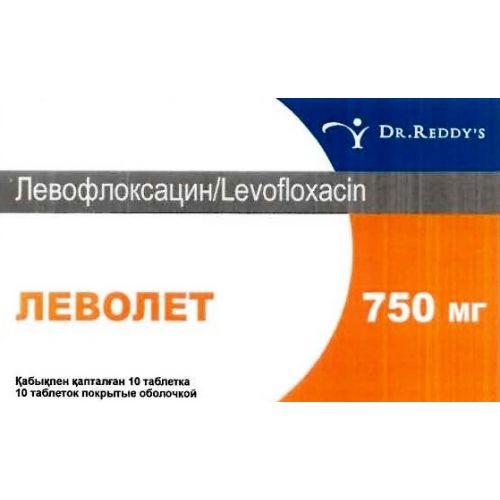
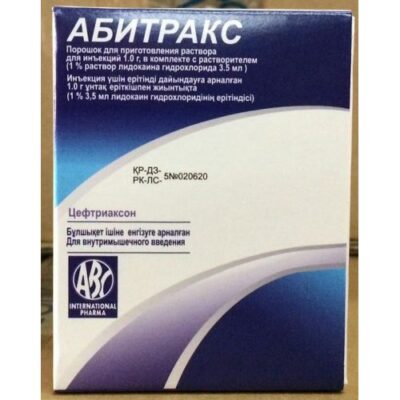
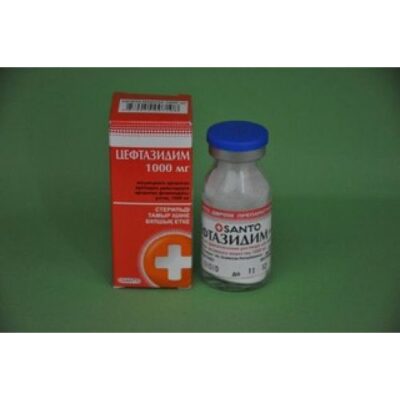
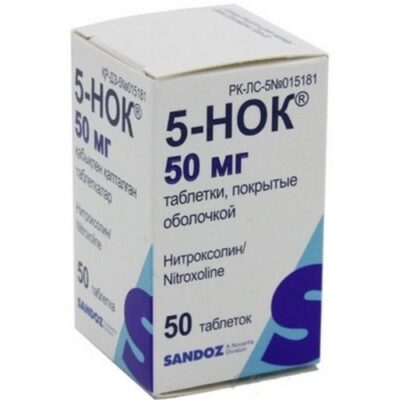
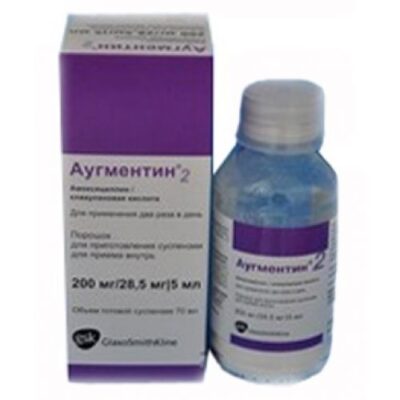
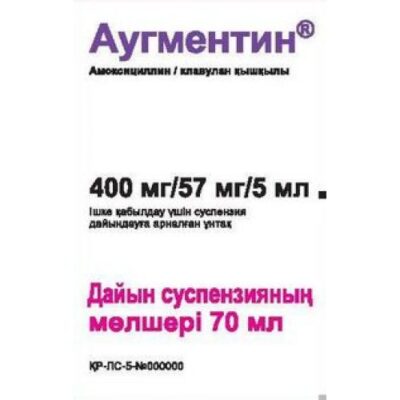
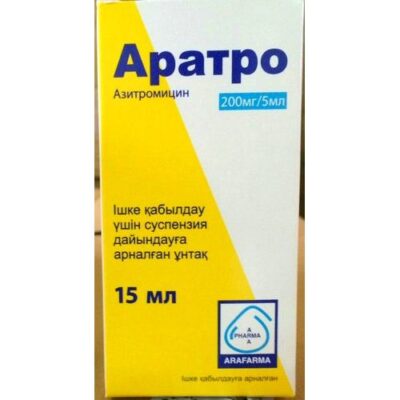
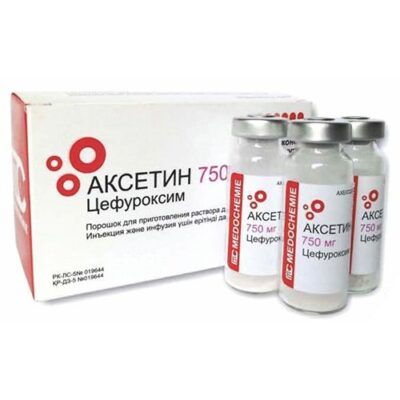
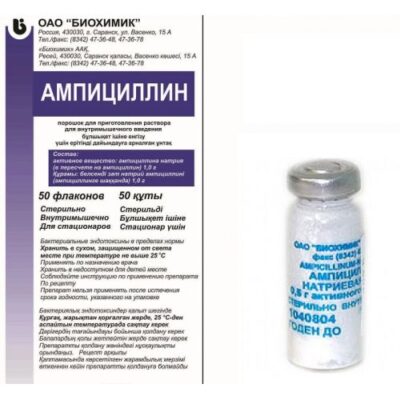
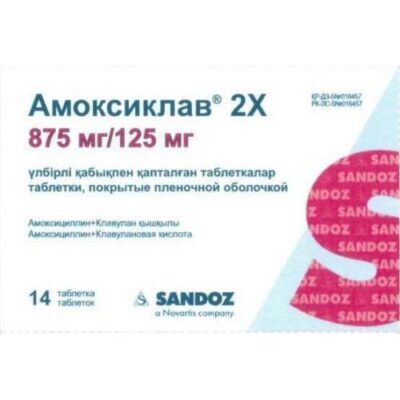
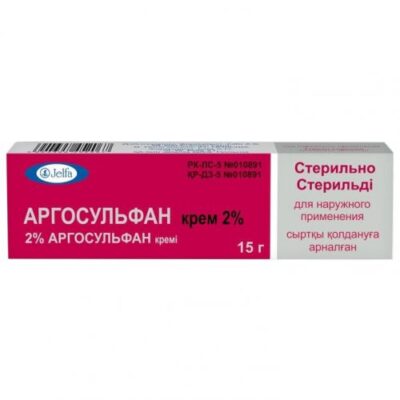






Reviews
There are no reviews yet.